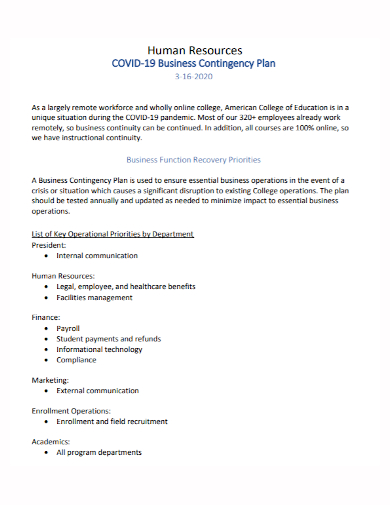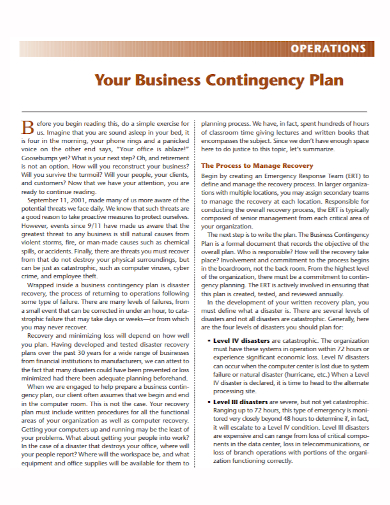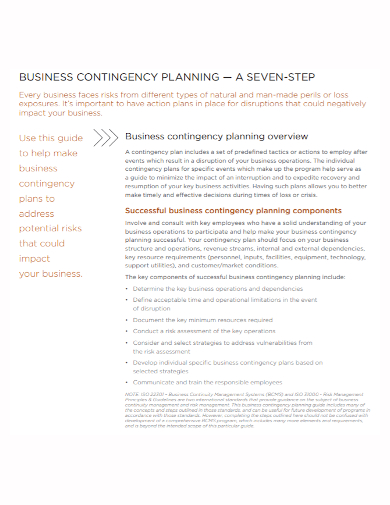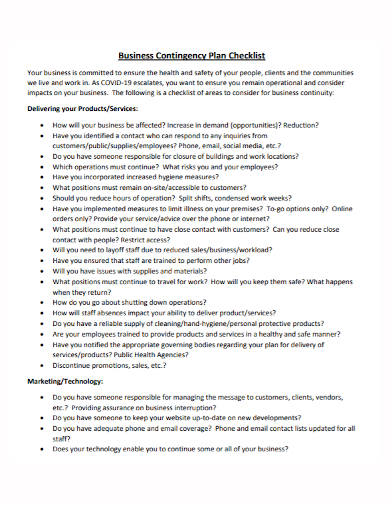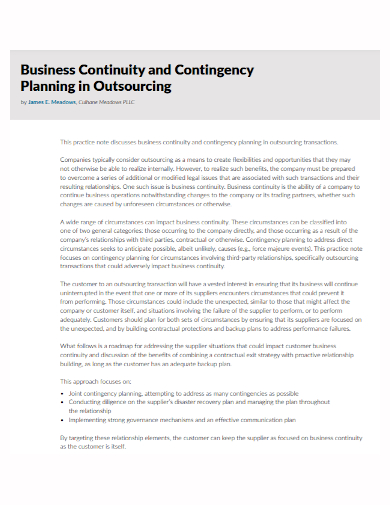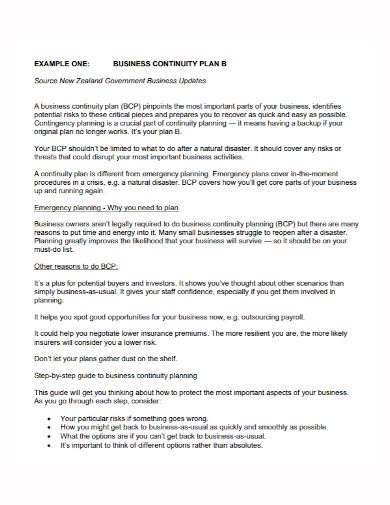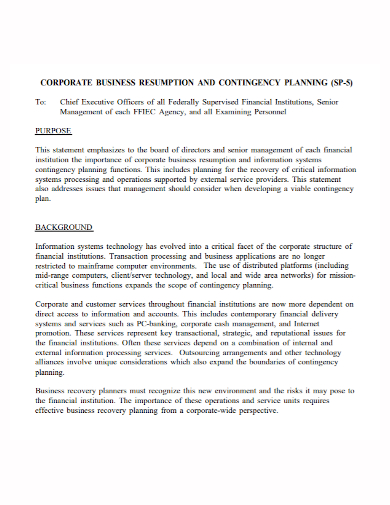Natural disasters, data breaches, and theft are all scenarios for which your company has most likely prepared. What about smaller gatherings? What if your most important customer abruptly switched to a competitor? Or your entire sales team becoming ill at their annual retreat? Many factors have the potential to cause your business to be disrupted, or even shut down. A business contingency plan can come in handy in a pinch. The steps outlined below will assist you in creating business contingency plans so that you can be prepared for the worst-case scenario.
10+ Business Contingency Plan Samples
A business contingency plan outlines what your company will do in the event of an unforeseen event or situation. A contingency can be positive—for example, a large infusion of cash—but it usually refers to a negative event that harms an organization’s reputation, financial health, or ability to stay in business. Fire, flood, data breach, and major IT network failure are all examples of negative events. Contingency plans are an essential component of your overall business continuity strategy because they ensure that your company is prepared for anything. Many large corporations and government agencies develop multiple contingency plans to ensure that a wide range of potential threats are thoroughly researched and responses are thoroughly practiced before a crisis occurs.
1. Business Contingency Plan Template
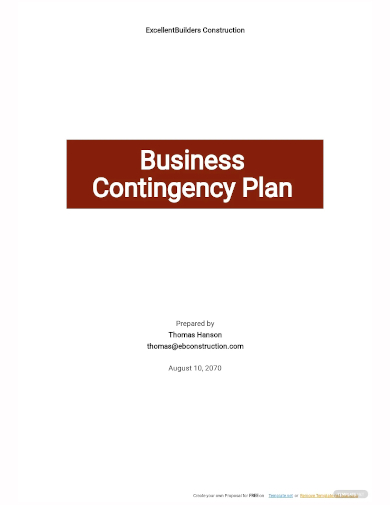
2. Small Business Contingency Plan Template
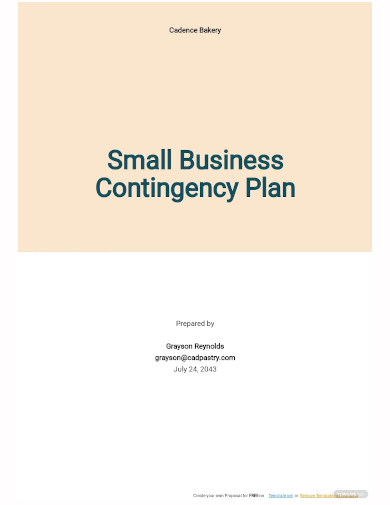
3. Business Emergency Contingency Plan Template
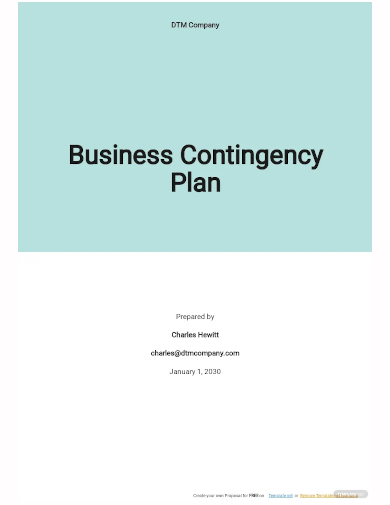
4. HR Business Contingency Plan
5. Business Operations Contingency Plan
6. Nonprofit Business Contingency Plan
7. Sample Business Contingency Plan
8. Business Contingency Plan Checklist
9. Business Continuity Contingency Plan
10. Standard Business Contingency Plan
11. Corporate Business Contingency Plan
Making a Contingency Plan
- List down the risks – Identify key events that could have a negative impact on the course of your company and key resources such as employees, machines, IT systems, and so on. Involve other team heads, subject experts, and even outsiders such as business consultants to gain a better understanding of what could cause problems and jeopardize the direction. Organize and categorize the information you gathered from the brainstorming session with the staff using a mind map. You can easily distribute this to everyone in the company to get their feedback.
- Prioritize each risk based on their impact – Once you’ve compiled a list of all the potential risks that could arise in various areas of your business, prioritize them according to the level of threat they pose. The risk impact probability chart is a useful tool to use in this situation. It aids in the assessment and prioritization of risks based on the severity of their impact and the likelihood of their occurrence.
- Create a contingency plan – Consider what needs to be done to return to normal operations following the event’s impact. You’ll need to clarify employee responsibilities, timelines that show when things should be done and completed after the event, restoration and communications processes, and the steps you need to have taken ahead of time to avoid losses after the event.
- Maintain the plan – Once you’ve finished your contingency plans, make sure they’re easy to find for all employees and stakeholders. Review your contingency plans on a regular basis and make any necessary updates. It’s also a good idea to notify your employees about the changes, as they may include changes to their roles and responsibilities.
FAQs
How do you pinpoint the key risks?
Determine the threats that these vital resources may face. Meet with employees, executives, IT, and other key personnel to get a full picture of what’s going on with your resources. Consider bringing in a consultant who specializes in risk assessment if necessary.
How do you distribute your plans?
Consider using an issue and crisis management app that delivers contingency plans and related documents to each employee’s mobile device. This approach eliminates the need for traditional hard-copy ring-bound folders and ensures that each employee has immediate access to the most recent plan should the worst happen.
That is how a detailed contingency plan is created. List the major incidents that could disrupt your business operations, prioritize them based on their severity and likelihood, develop an action plan outlining what you should do if they occur, and review and update it on a regular basis.
Related Posts
FREE 7+ Fashion Business Plan Samples in PDF
FREE 10+ Sprint Planning Samples In MS Word | Google Docs | PDF
FREE 10+ Wedding Planning Samples in MS Word | Apple Pages | Powerpoint | PDF
FREE 9+ Monthly Study Planner Samples in PSD | Illustrator | InDesign | PDF
FREE 9+ Sample Curriculum Planning Templates in PDF | MS Word
FREE 10+ Teacher Development Plan Samples in MS Word | Google Docs | Apple Pages | PDF
FREE 10+ Basketball Practice Plan Samples in PDF
FREE 12+ School Business Plan Samples in PDF | MS Word | Apple Pages | Google Docs
FREE 7+ Client Strategic Plan Samples in PDF | MS Word
FREE 11+ Trucking Business Plan Templates in PDF | MS Word | Google Docs | Pages
FREE 7+ Small Hotel Business Plan Samples PDF | MS Word | Apple Pages | Google Docs
FREE 14+ Bakery Business Plans in MS Word | PDF | Google Docs | Pages
FREE 4+ Yearly Lesson Plan Samples in PDF
FREE 50+ Strategic Planning Samples in Google Docs | Pages | PDF | MS Word
FREE 10+ Construction Project Plan Samples in MS Word | Google Docs | Apple Pages | PDF

